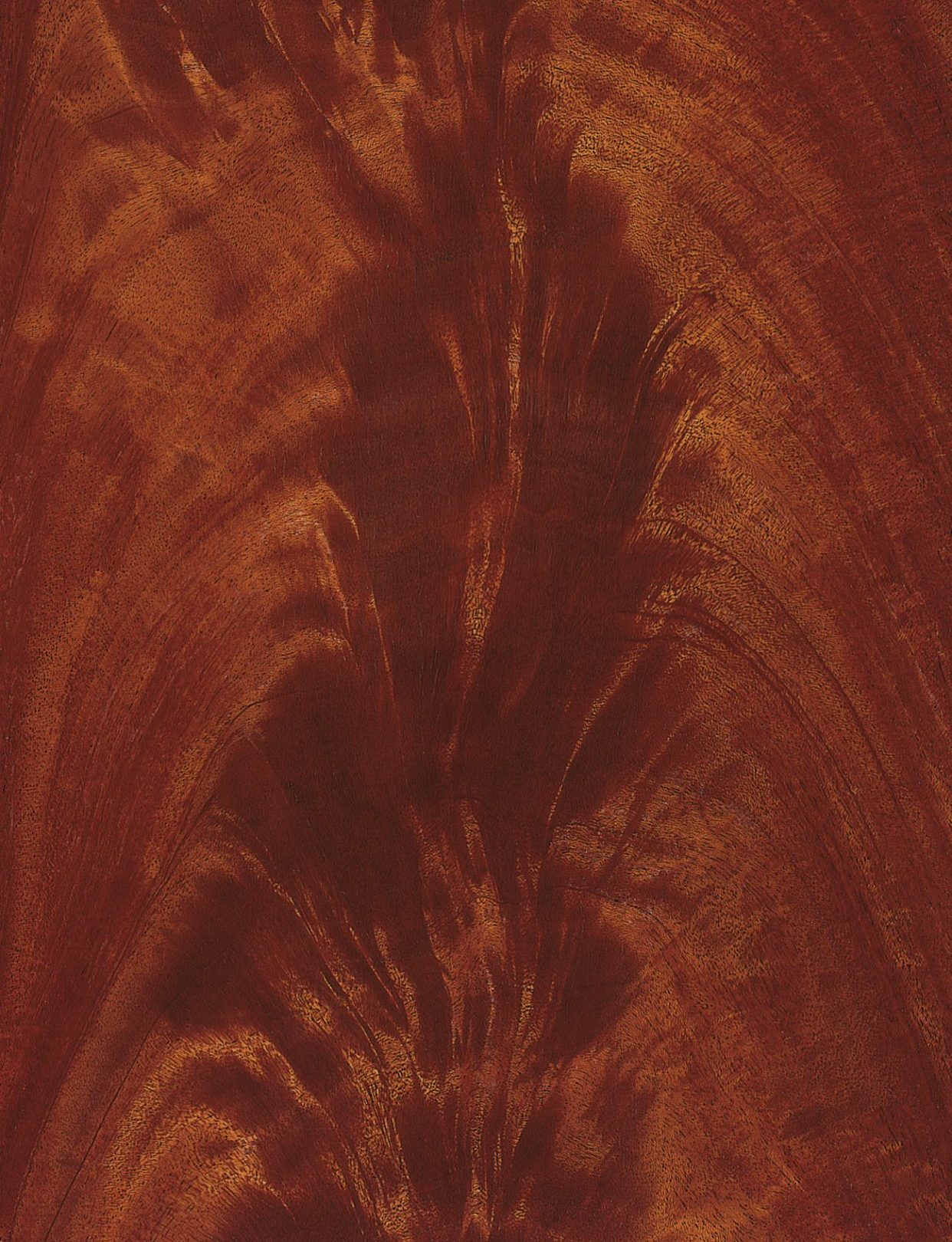
African Mahogany Crotch
Khaya ivorensis

Trade Names
African Mahogany Crotch, Khaya Crotch
Origin
Africa
Range
West Africa, Liberia, Ivory Coast, Ghana, Togo, Nigeria, Cameroon, Gabon, Congo, Zaire, Angola, lower tropical rain forests and tropical semi-evergreen rain forests. Principally differentiation is made between two species: Khaya ivorensis and Khaya antotheka. The difference, however, can only be seen with great difficulty if at all. Only Khaya ivorensis can be sliced. Khaya antotheka cannot be sliced due to the hardness of this wood.
Uses
Mass-produced furniture (traditional in England and USA), upright and grand pianos. In lengths of over 2 m for high quality architectural woodwork; such lengths are very seldom but are found more often in this species than is the case with American Mahogany Crotch.
Properties
Differentiation must be made between the swirly part of the crotch and the actual crotch zone in which the full curl, the so-called “feather”, should be as straight as possible and show on the wood in one continous line. Lengths over 2 m are extremely rare.
Machining
In every way Khaya works well and easily. Only the partially interlocking grain should be taken into consideration, especially in the crotches.
Seasoning
Natural seasoning and drying are easy and quick and present no particular difficulties. Slight warping can occur.
Finishing
African Mahogany takes any surface treatment well and transparent or even luster varnishes are to be given preference for architectural woodwork. Glazes should be used for exterior work.
Jointing
African Mahogany can be glued without any problem. Screw and nail joints should be pre-drilled.

